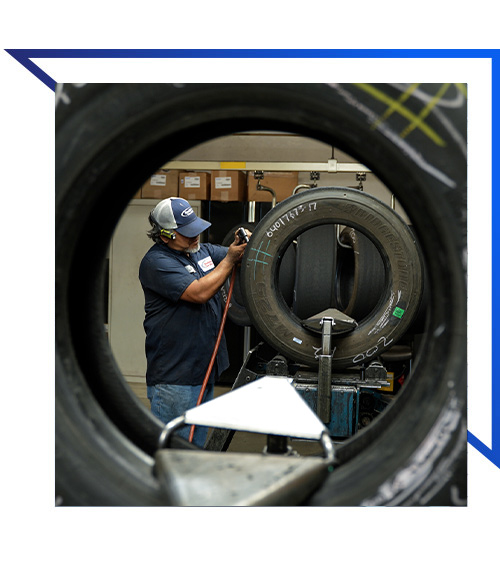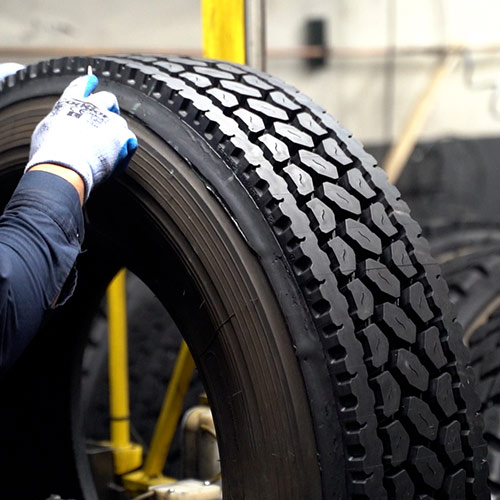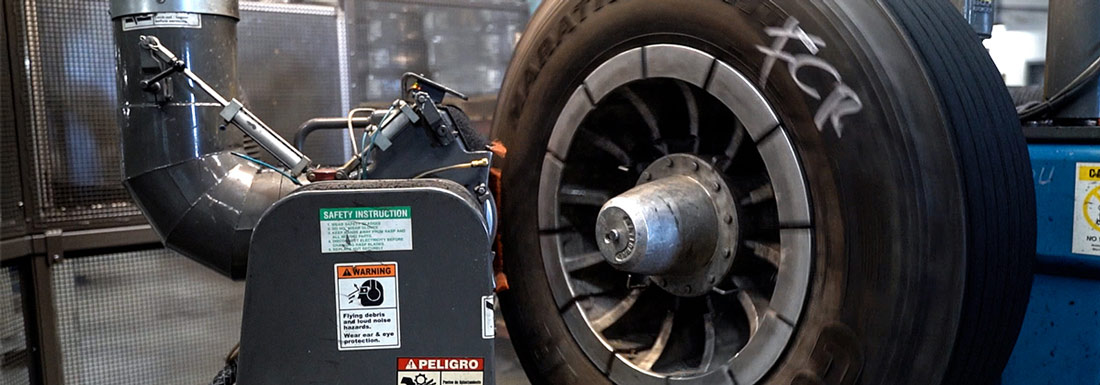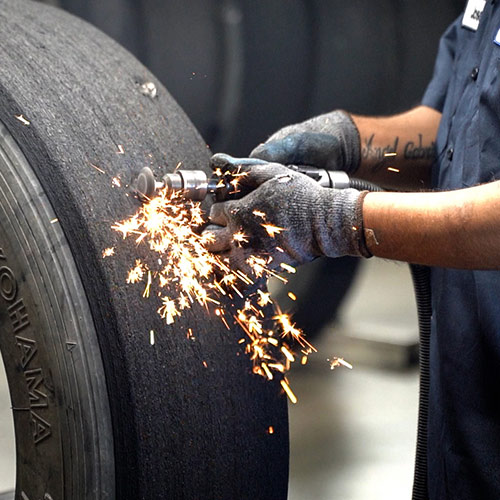
| READ TIME: 26 MINS INDUSTRY: SHIPPING AUDIENCE: FLEET MANAGERS, DRIVERS |
Tire retreading has deep roots within the transportation industry. In 1912, Marion Oliver patented the idea of providing a tire casing with a new tread. Back then, the United States possessed approximately 500,000 automobiles.
Much has changed in over a hundred years since the advent of retreads. Trucking has grown to a $940 billion industry. Today, there are more than 2.9 million semi-trucks registered in the US.
In the current market, carriers relentlessly pursue market share in an increasingly competitive environment. The difficulty of this competition is compounded by rising essential expenses, most notably in the cost of tires.
As carriers have meticulously tended to their bottom lines, many have looked to foreign markets for cost-effective solutions. Consumer Reports has warned motorists of poor stopping distances and generally poor performance related to these tires. Some have even experimented with used tires to reduce costs in exchange for their safety.

It might be cheaper to put the wrong tire on your trucks to save a few bucks now. But without question, it will cost you significantly more in the long haul. Now is the time to invest in the long haul.
With respect to the long haul, retreads have found a growing place in the market as a long-term, cost-effective solution for carriers.
Retreads appeal to carriers for their lower initial cost, often priced 30% lower than traditional tires. Additionally, retreads are shown to be more sustainable and, in many cases, more fuel-efficient than traditional or foreign alternatives.
Some may be mystified, then, that retread adoption is not more universal to the carrier market.
The answer relates to perception.


Pat Volk, director of the tire division at England Carrier Services, is familiar with the stigma of retreads in the trucking industry.
“You might have seen a tread on the side of the road before. So many people assume that’s from a retread. But that’s just not the case,” comments Pat. “It really is this urban legend that just keeps going.”
Ryan Lavigne, executive vice president at England Carrier Services, shares in this frustration.
“You are just as likely to see poor performance from a new tire than you are a retread tire,” Ryan says. “Retreads are so thoroughly evaluated. Safety is a top priority for anything retreaded.”
These claims by industry experts are substantiated by a growing list of papers advocating retread use within the industry.
In 2007, the University of Michigan Transportation Research Institute (UMTRI) was tasked with surveying the roadsides of the United States for tire debris to determine their origin. This study was in response to widespread public opinion that retreads were responsible for roadside debris.
The UMTRI sampled over 1,496 items of debris across several states. Following careful investigation, the UMTRI concluded that roadside tire debris could not be credibly attributed to retreads any more than standard tires.
Other academic and federal institutions have corroborated the safety of retreads, including publications by the Washington State Department of Transportation and the Arizona Department of Transportation.
Despite evaluation by credible organizations, some point to the lack of universal implementation of retreads by fleets as evidence for their inefficacy.
Like safety, retread adoption has also been evaluated by industry authorities.




In a recent article published by Tire Review magazine, Jason Roanhouse, vice president of North American Bandag operations, spoke on retread adoption in the trucking industry.
“Up to 90% of large fleets in the US and Canada use retreads and approximately 44% of all commercial tires in operation are retreads.”
This popularity doesn’t surprise Tom Clauer, senior manager of commercial and OTR product planning at Yokohama Tire Corp. He notes,
“…retreading is a vital component in fleets’ maintenance programs and budgets.” He names retreading as a factor that should be “top of mind” in any tire purchasing strategy.
In considering the incentives for retread adoption by major fleets, Clauer considers cost-effectiveness to be primary. He observes,
“Assuming the fleet is using products from premium manufacturers, which offer products specific to the waste industry and who have a good reputation for retreadability in this segment, retreading can represent a vital savings to the fleet if selected and managed properly.”
Bridgestone’s Keith Iwinski, director of marketing for the American division, agrees with Claur.
“After the first retread, fleet managers can begin to see spend reductions and cost savings, which continues after the second or third retread,” he explains. “In fact, fleets have lowered tire costs to less than 1.5 cents per mile, well below the industry average, by incorporating retreads.”
In addition to most major commercial fleets utilizing retreads, several federal organizations, including the United States Postal Service and the military, have acknowledged their use of retreads as a reliable way to reduce costs and promote sustainability.
“Every major fleet in America is using retreads,” says Ryan Lavigne. “There are huge environmental benefits of using a retread, too. You can easily reduce your carbon footprint.”
Commercial enterprises are not alone in their zeal to adopt retreads. The environmental benefits of retreads have also encouraged other organizations to promote their propagation.


Some organizations identify retreading as one of the oldest examples of a circular economy and a pioneering initiative in corporate sustainability.
Retread sustainability is cyclical. Reusing a tire casing 2 – 3 times minimizes materials manufactured for new tire casings. With respect to sustainability, there are no diminishing returns per retreading.
Aside from the materials sustained by retreading, the processes employed to produce those materials are also mitigated. By omitting these processes, Bandag concluded the following:






Such impactful benefits have inspired organizations like the Tire Retread & Repair Information Bureau to promote retread benefits on a non-profit platform. These organizations are driven exclusively by the perception of value in retread sustainability.
Others, like Virginia Tech, have begun experimenting with 3D printing technology to aid in retreading and promoting sustainability. Aided by advances in polymer technology, operating engineers are applying pioneering techniques to optimize the retread process further.
These efforts are inspired by an eventual transition to a circular economy to maximize the utilization of antecedent materials.
As peripheral industries begin to take interest in the sustainability of retreading, it is anticipated that retread popularity will continue to accelerate.
Retread adoption in the current market is increasing at an exponential rate. Adoption is most prominently challenged by antiquated perceptions of retread safety within the market.
Despite these challenges, federal and academic affirmations of retread safety aid in refuting the misguided perceptions held by some carriers. Additionally, widespread interest in the significant potential of retread sustainability is also promoting positive perception.
100 years following their inception, retreads continue to exert a strong presence in an ever-changing market.



The England Carrier Services (ECS) division offers various services for carriers ranging from maintenance to support. As ECS members, carriers have access to nationwide discounts on fuel and tires from dedicated team members committed to finding the best price. ECS also provides factoring services with benefits such as same-day funding to a bank account or fuel card. These options allow carriers the freedom to focus on growing their business while saving time and money.